Top 5 sacred sites in Laos
Laos is sometimes considered Thailand's younger brother. It is still pure, rugged, unspoiled and tourism has not yet overrun the country. Laos has remained isolated for a long time and still has many areas where nature reigns. You can get into the interior of Laos and enjoy mountains, valleys, dense forests, vast lowlands and the meandering Mekong River. Besides nature, Laos also has a lot of history and culture. In this article, we will focus on the spiritual side of Laos by listing the top 5 sacred sites.
1. Wat Phou (Vat Phou)
The Wat Phu must definitely be a highlight during your trip through Laos, literally because this magnificent Khmer temple complex is located 1,400 meters (4593 ft) above sea level on Mount Phu Pasak. Don't expect Angkor Wat scenes here in terms of architectural style. However, the Wat Phu is a stunning shrine with tall trees displaying a stunning shadow on the site. It gives the What Phu a mystical atmosphere.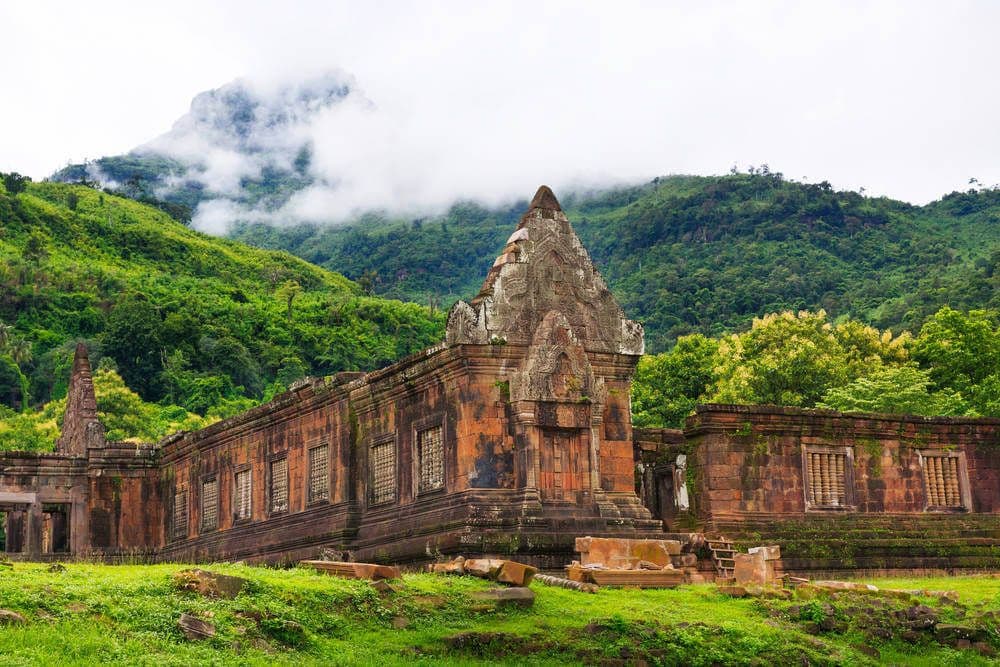 Picture by reis-expert.nl
Picture by reis-expert.nl
This temple is a unique place in every way. The location is amazing and you won't find any temple in Laos that comes close in terms of architectural style. The collection of temples and shrines is associated with Buddhism but there is evidence that the temples were once dedicated to some Hindu gods. This can be seen in some reliefs on the ruins. Today, the complex is the important spiritual center for Theravada Buddhism; one of the oldest and most prevalent religions in Laos today.
2. Pak Ou Caves
Perhaps the most extraordinary caves in Laos are the Pak
Ou Caves, located about 25 kilometers (15.5 miles) from Luang Prabang at the mouth
of the Nam Ou River. The caves are located on an impressive limestone
cliff called Pha Hen, which can be reached via a scenic boat ride
down the Mekong River. 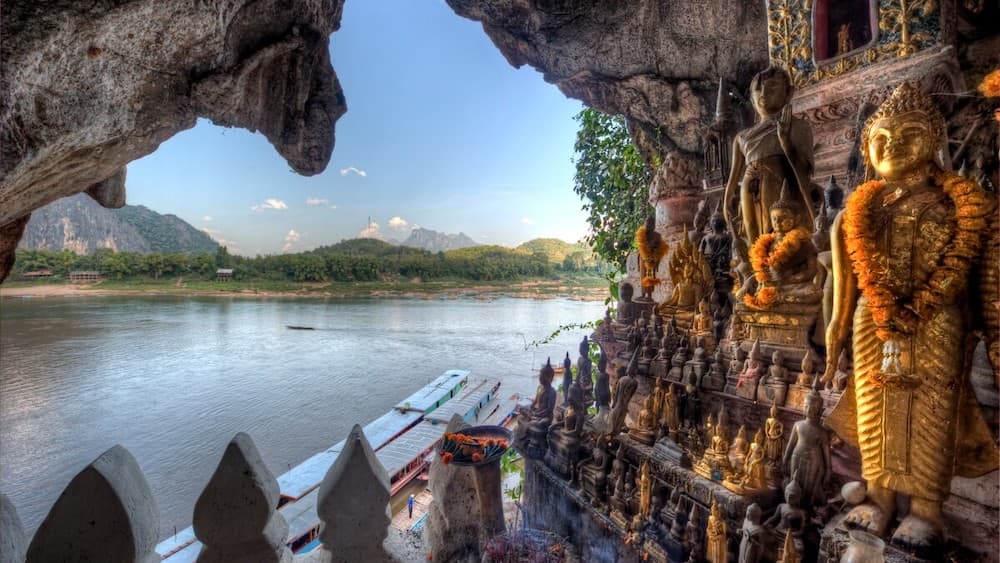 Picture by afar.com
Picture by afar.com
The two caves themselves are not what it is all about, but the more than 4,000 Buddha statues (of all shapes and
sizes) that flaunt in the cave's alcoves which make for an impressive picture.
By the way, the Laotians have another name for these caves, Tam Ting,
which means "caves of the thousands of Buddhas.
Although this place had
religious significance long before Buddhism was introduced to Laos, the
statues were not placed here until many centuries later when these caves
were designated a sacred site.
3. Wat Xieng Thong
The Wat Xieng Thong in Luang Prabang is undoubtedly the city's most beautiful temple and, like the Royal Palace, stands close to the Mekong River. In addition, the Golden City Monastery, as how Wat Xieng Thong is also called, is considered by Laotians to be the most important symbol of their country's religious heritage. 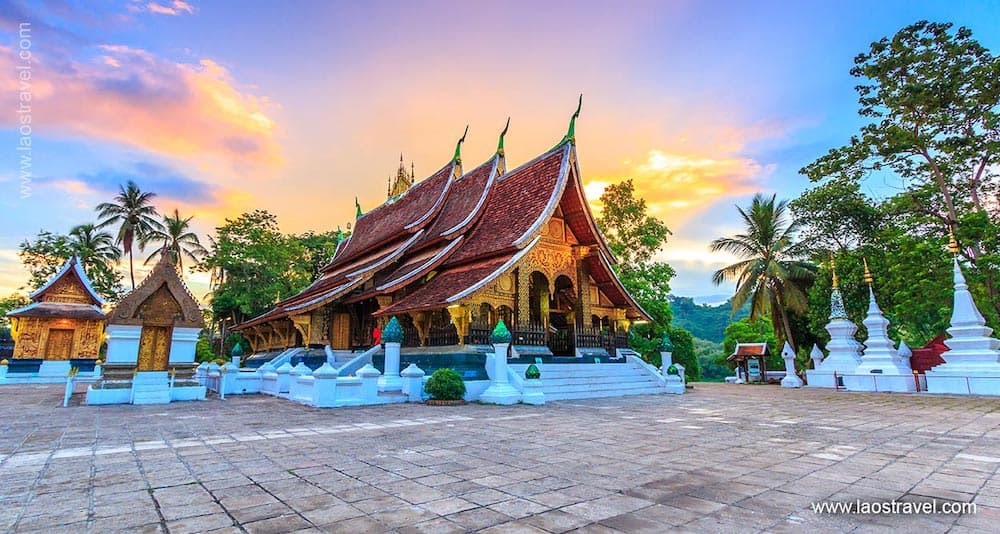
The complex is known for the beautiful colored glass mosaics on some of its main buildings, which shines beautifully
in the sunlight. These mosaics include scenes from Buddhist texts, as well of the daily life of Laotians.
It is the city's oldest monastery, built in 1560 by Lao King
Setthathirath. The temple was owned by the royal family for a long time.
It is an example of classical Luang Prabang architecture, with richly
carved wooden pillars and doors with images from the life of Buddha. The
exterior of the temple is covered in mosaic.
4. Wat Sisaket (Vat Sisaket)
Wat Si Saket is a temple built in Vientiane in 1818 by King Anouvong (Chao Anou) of the Kingdom of Vientiane. It is the oldest temple still completely intact in Vientiane. It was built in Bangkok style, and this is probably the reason why this temple was the only one spared by the Siamese This temple also contains about 6000 Buddha statues. 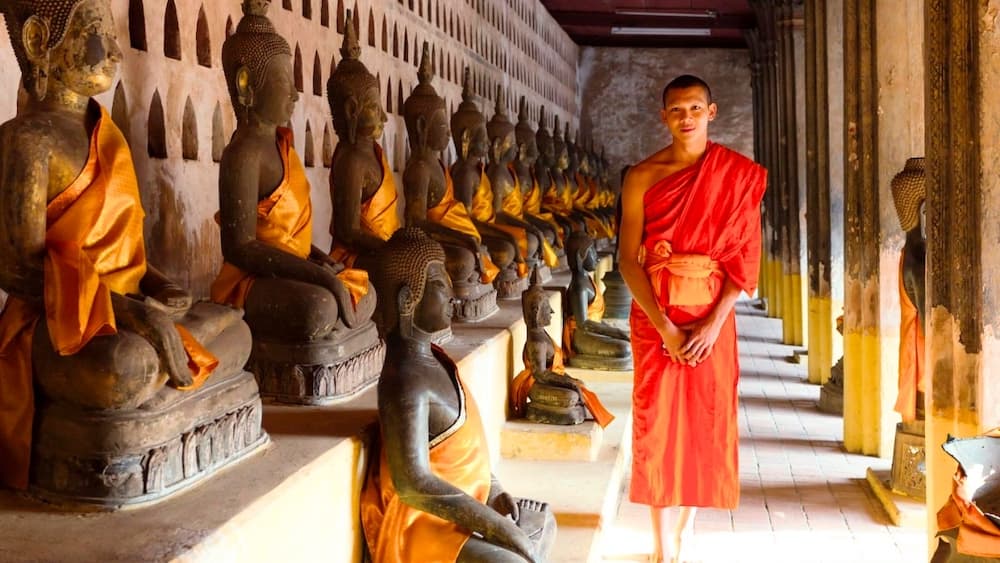 Picture by bestpricetravel.com
Picture by bestpricetravel.com
Its serene atmosphere and the extensive collection of Buddha images make
it a fascinating site for both spiritual reflection and historical
exploration.
5. Pha Tat Luang
Vientiane is home to the country's most religious building, the Pha Tat Luang, or the "Great Holy Stupa". This gigantic golden stupa, surrounded by a monastery and many smaller stupas, is also the most important national monument. The Pha That Luang is incorporated into the coat of arms of Laos and is printed on banknotes.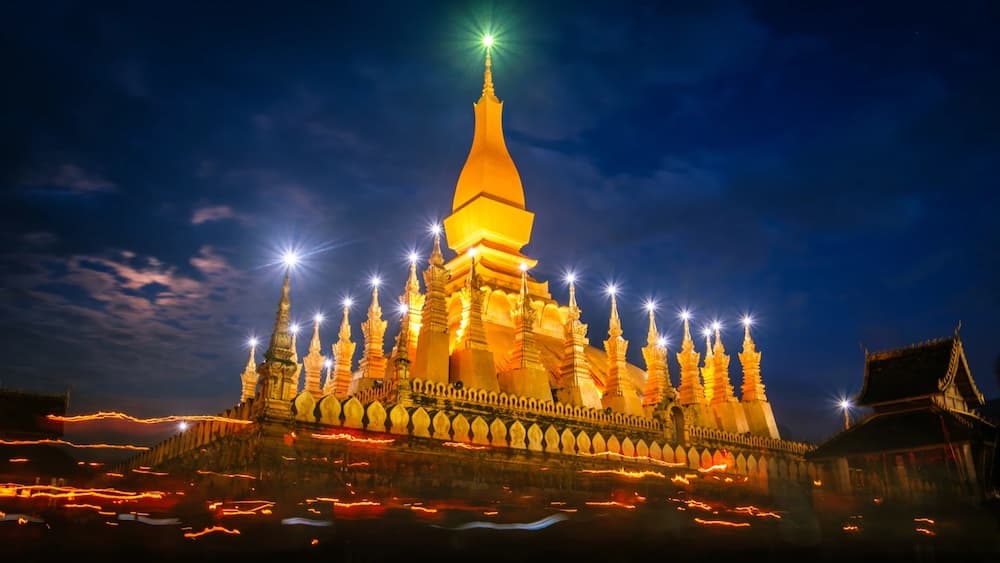 Picture by discover Laos
Picture by discover Laos
Its shining centerpiece symbolizes both the Buddhist religion and Lao independence. A hair of Buddha is said to be kept in the complex. Construction began in 1566 and in the following years the stupa was rebuilt several times. During the Thai invasion in the nineteenth century, the stupa was severely damaged and now it is luckily fully restored.